This post describe some amazing reproductive strategies, the paradox of homosexuality in nature, a recent experiment where the Gage lab explored reasons behind homosexuality in insects and the public reaction that followed.
Check out the paper here:
Experimental evolution with an insect model reveals that male homosexual behaviour occurs due to inaccurate mate choice
https://www.sciencedirect.com/science/article/pii/S0003347218300836
DOI: https://doi.org/10.1016/j.anbehav.2018.03.004
Check out a shorter version of the blog here:
https://theconversation.com/why-homosexual-behaviour-in-insects-may-be-a-case-of-mistaken-identity-98029
Homosexuality in nature; what, where and why?
Sex is costly in insects. It uses up resources such as water, energy and time. In some species, like bush crickets, an ejaculate can be a quarter of their body weight while in others, like a species of fruit fly, the sperm is longer than the body!

Female Mormon cricket storing chunky sperm packet: (Credit: Dan L. Johnson)

A fly vs. sperm long sperm with the (Drosophila bifurca): (Credit: Scott Pitnick)
Sex also carries risks such as the transfer of STDs (nearly 100 are known), injury from mating trauma (like from spiny or needle-like penises), as well as increasing vulnerability to predation. The main benefit of sex in nature is reproduction, which transfers genes to the next generation.
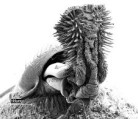
A rather vicious looking weevil (Callosobruchus maculatus) penis: (Credit: Johanna L. Rönn)
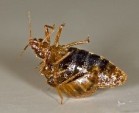
A male bed bug engaging in ‘traumatic insemination’: (Credit: Rickard Ignell)
Homosexuality in nature seems odd because it carries all the costs of mating but no direct benefit of producing offspring. Moreover, any time a male is being amorous with another male he could instead be missing out on spreading his genes with a female. Yet homosexuality has been seen in > 450 species of animal including > 100 species of insect. In some studies, over half of matings were male on male!
There are dozens of ideas behind homosexual behaviour, broadly grouped into adaptive sexually selected strategies and maladaptive errors. Males could engage in homosexual activities to reduce the competition by distracting male competitors, establishing social dominance or causing injury. Homosexual activity could also improve heterosexual performance by indirect transfer of sperm through males they mate with, practising sexual courtship, keeping the ejaculate primed or forming social bonds.
Conversely, homosexual behaviour provides no advantage and could be due to environmental stress (like alcohol in fruit flies!), the lack of social conditioning, the lack of the ability to recognise mates or a negative by-product of genes which have other beneficial effects elsewhere (pleiotropy).
No real consensus has been reached, with different studies supporting or refuting particular ideas even within the same species.
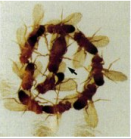
Another species of fruit fly (Drosophila melanogaster) with a single gene mutation causing males to form a conga chain orgy, and completely ignore the female in the middle by arrow……… (Credit: Zhang & Odenwald)
Homosexuality, adaptation or error? Experimental evolution of sex ratios in a beetle suggests error.
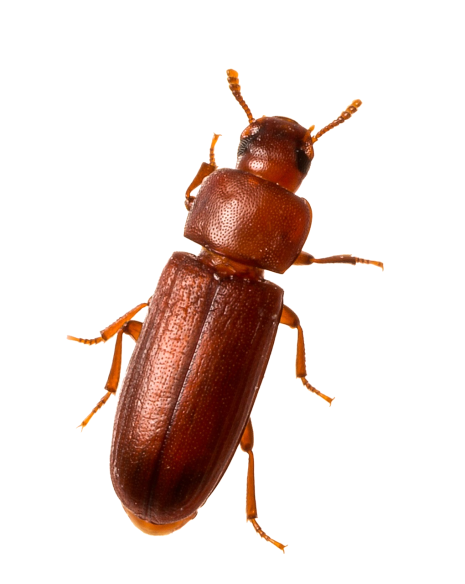
The red flour beetle (Credit: Martin Taylor & Jessie Gardner)
The Gage lab grows the red flour beetle (Tribolium castaneum). It is a brown-red beetle and a widely distributed grain pest – its name is a pretty good description! We previously noticed that males didn’t seem very fussy; mounting females, males, dead beetles and even oats (indicating potential errors from poor mate recognition). Others have noticed that virgins lived longer than males in groups (reinforcing the cost of mating). It’s been shown that males die prematurely after being clogged up with ejaculates and less frequently males could also indirectly transfer sperm via other males on the spined insect penises (aedeagi) (indicating potential adaptive reasons for male-male action).
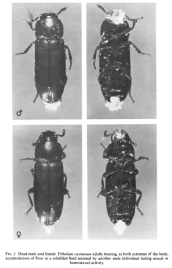
A sticky situation; male flour beetles post mortems showing spermatophores clogging the head and rear: (Credit: Spratt)

The flour beetle penis (1) with spines (2) which collects rival sperm (3): (Credit: Kess Veltkamp)
Flour beetles can complete a lifecycle within a month and are pretty hardy. Therefore, they are ideal to use for experimental evolution; a powerful technique that lets us see evolution progress in controlled conditions across replicated populations. We have grown populations of beetles for >100 generations, with either a male-biased sex ratio or a female-biased one. The male-biased populations have more intense sexual selection, the fight to reproduce, since females are mated 90 times more frequently. So in the male-biased populations, far fewer males will get to reproduce as females, and their eggs, are limited. Consequently, any male that reproduces, and passes on his genes, should be better at competing, mating and fertilising females. Any traits consistently displayed by male-biased populations would be adaptive. Previously the Gage lab has shown that a male-biased population produces males which are more sexually competitive and creates populations which are fitter and less likely to go extinct.
We compared the male mating behaviour within male-biased and female-biased populations to see whether the paradox of homosexual behaviour in the beetles was broadly adaptive or maladaptive. For each sex ratio, a male was placed within an arena and was given the simultaneous choice of mating with a male or a female. We would expect any behaviour displayed by the competitive male-biased males to be an adaptive one shaped by sexual selection. If he showed relatively more homosexual behaviour, male-male action could be an adaptive competitive behaviour. If he showed more heterosexual behaviour, male-male action would be error.
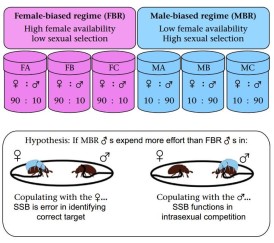
Experimentally evolved lines and the predictions of the mate choice assay

What we spent 50 hours watching: (Credit: Iain Barr)
We watched nearly 300 males dating; which equates to over 50 hours at 30oC and 60% humidity! We found there was no difference in the total mating effort across populations; they were equally motivated. We found that males from female-biased populations weren’t picky with half of mating effort being on males and half on females. However, males from the competitive male-biased populations were more likely to mate the female first, mate her more frequently and spend a greater amount of time mating her, therefore, showing less homosexuality.
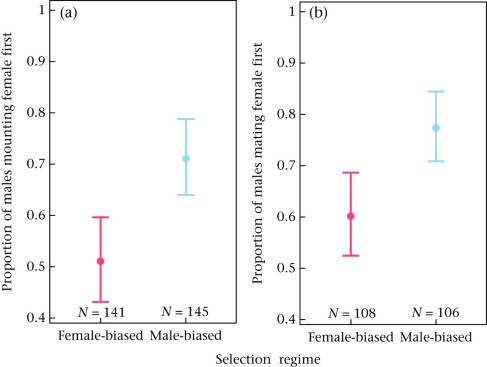
Example of what we found; male biased males were more likely to mount and mate the female first.
So, the competitive males were relatively more efficient at recognising the female because those that didn’t in the past were less likely to have passed their genes on. If the female-biased males make mistakes and mates randomly, it is not selected against because 9 times out of 10 would be a female and their genes would be passed on. The results also suggests that the ability to recognise mates is costly, otherwise it wouldn’t be lost.
The issue of anthropomorphising animal behaviour studies
Homosexuality in animals can often attract a lot of public attention, with TED talks on homosexual necrophilia in ducks and celebrity homosexual zoo couples like Roy and Silo chinstrap penguins.
The results we showed were relevant to flour beetles and likely to invertebrates generally however, In the paper we made no mention of humans or closely related animals. Being aware of potential controversy, in the press release we stated that:
“These results cannot be generalised to explain the behaviours of animals with more complex cognitive function and social structures like birds and mammals, which are likely to have very different reasons for same sex mating,”
Media coverage has been largely positive and light-hearted. However, in some cases media and public has diverged from the intended focus. At its worst the findings have been used to promote very unpleasant discriminatory views. The issue is widespread and seems especially bad in controversial areas like climate change (regardless of the volume of evidence supporting it!); such quandaries have prompted research on public response to science. Fortunately, no personal attacks have been made here, but it is not always the case as outlined in this nature article. The article also suggests solutions like “Respond once to critics or trolls; Don’t make it personal; Don’t tweet when angry or upset”.
This was the first time I’ve had media attention and was quite surprised and intimidated. I still wonder whether I should have engaged with the media response to clarify inaccuracies, like using photos of green ground beetles and ladybird, as well as answering genuine questions like ‘what do you mean about prefer?’
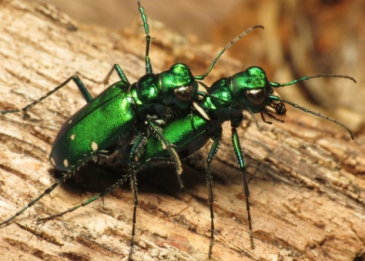
One of many beetle mating images on news sites; not flour beetles.